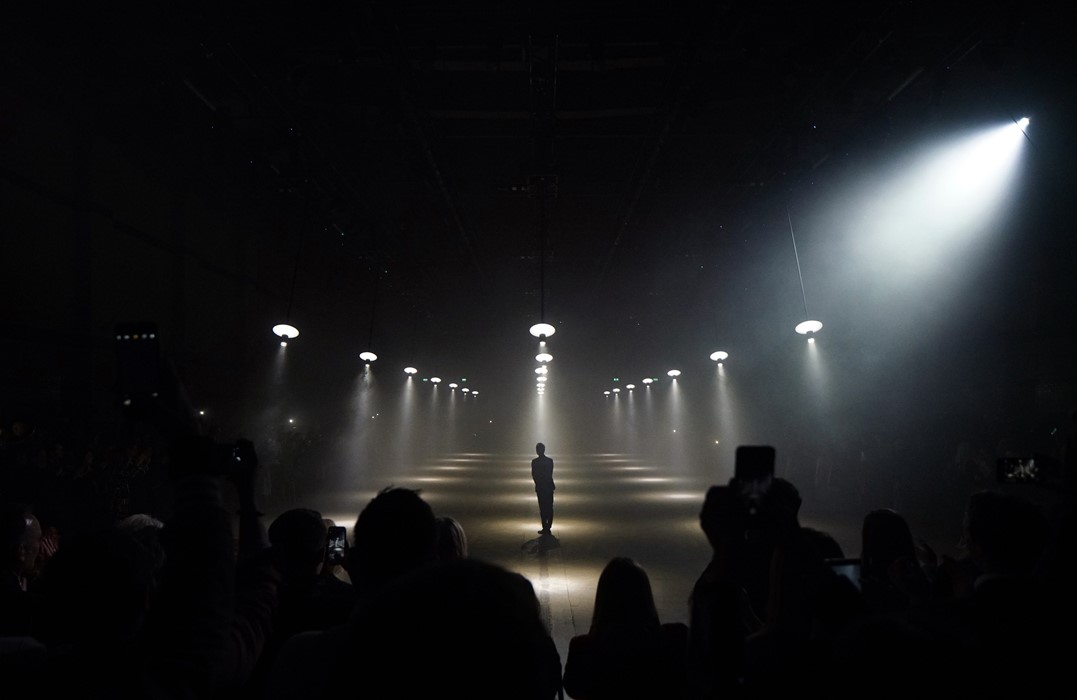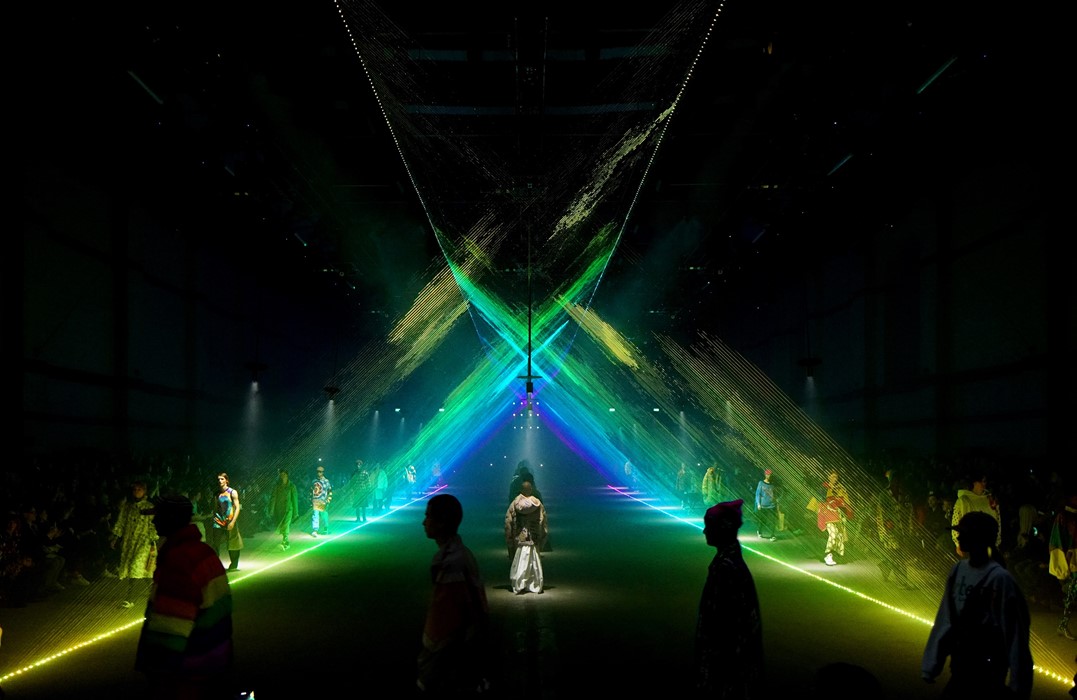We talk to United Visual Artists, who provided the multi-sensory backdrop for Christopher Bailey’s swansong
Christopher Bailey had given his audience a clue as to what to expect at his final collection for Burberry, the house he has led for 17 years, via a small swatch of fabric stapled on to the invite – the traditional Burberry plaid, here woven through with the colours of the rainbow.
It was his ode to the LGBTQ+ community, and their rainbow flag – first created from hand-dyed strips of fabric by Gilbert Baker in 1978, now an international symbol of both pride and protest, used to celebrate equality, or to fight for it. Bailey drew on its hopeful spirit for his S/S18 collection, the rainbow motif joyfully running throughout – slanted across knitwear or gilets, on checked blankets or on patterned fleeces, where the colours were reconfigured into poppy Keith Haring-style cartoons. The show closed with rainbow stripes running down a floor-length shearling cape, lined with Burberry plaid and proudly worn by Cara Delevingne.

In this optimistic spirit, the show’s finale took place under a vast laser light pyramid that stretched across the runway. The spectacle spoke of nightclub culture, reflected too in the collection – shellsuits and printed silk shirts recalled Bailey’s own adolescence in the 1980s and 90s – and the music, provided by Bronski Beat, Jimmy Somerville and The Communards. The laser lights themselves were part of an installation, Spectrum, by United Visual Artists, a London-based art practice which works across disciplines on exhibits designed to stimulate, or recreate, emotion.
The collective also provided the swinging pendulums that opened the show, swaying over the mammoth Dimco Buildings, where the show was held, a Victorian space in West London that originally housed the Underground’s power source for the Central Line. Transplanted for the first time from Australia, the piece, entitled Our Time (2016) explores the passage of time through sound, movement and light, each pendulum swinging at its own rhythm, to reflect the subjectiveness of time. “How long is a moment? At what rate does time actually pass?” say the notes to the original exhibition. At once disorientating and hypnotic, with a multi-sensory canvas, they seek to create a visual representation of sound itself.
“Christopher got in touch and asked whether I would be interested in collaborating on his last show at Burberry,” said United Visual Arts co-founder Matt Clark. “He mentioned that he had once seen our work in Hong Kong and had been an admirer for a while – so the conversation started there.”

“The starting point to our conversations centred around the concept of time and how it is drives the work we both do on a conceptual and practical level,” Clark says. “The pendulums were designed to create the illusion of time slowing down, so it was an interesting juxtaposition to the fleeting nature of a catwalk show.” And of the music – Our Time (2016) is usually accompanied by the sounds of a chiming clock heart – “that was very personal to Christopher, so he made those choices.”
“Time” is also what Bailey labelled the collection, a musing on the “past, present and future”. He’s been at the house for 17 years. In fashion terms – a lifetime. Taking his bow under a pyramid of laser lights, and to the sounds of Somerville’s Don’t Leave Me This Way, he left on a high.
